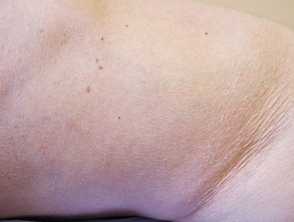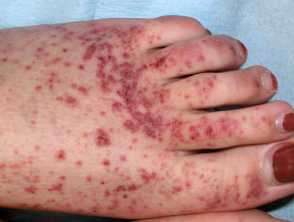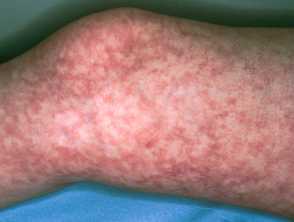What is Sjögren syndrome?
Sjögren syndrome (SS) is an autoimmune disease that mainly affects secretory glands of the eyes and mouth, reducing production of tears and saliva (sicca symptoms) and resulting in dry eyes (called keratoconjunctivitis sicca) and dry mouth (xerostomia).
Many patients with Sjögren syndrome also have features of other autoimmune diseases, such as systemic sclerosis, systemic lupus erythematosus or rheumatoid arthritis. In this case, they are said to have an overlap syndrome or SS is said to be secondary to the other autoimmune disorder (termed secondary SS). The diagnosis is primary SS when other conditions are not present.
Sjögren syndrome
Who gets primary Sjögren syndrome?
Primary Sjögren syndrome is 9 times more common in females than males. Anyone can develop it, but it is especially common in older females in the fifth and sixth decades of life. Up to 2% of older females have been found to have primary SS.
The prevalence of primary SS in the population ranges from 0.01–0.09%.
What causes Sjögren syndrome?
Sjögren syndrome does not have a known cause. One theory is that viruses such as Epstein-Barr virus may play a role in triggering SS in people with a genetic background that predisposes them to SS. Once the condition has been triggered, lymphocytes infiltrate the secretory glands. This is a slow, low-grade inflammatory process that damages the cells of the glands and thus impairs gland function.
Variants of certain genes such as IRF5-TNPO3, STAT4, and IL12A may cause dysregulation in both adaptive and innate immunity that is important for the development of primary Sjögren syndrome.
What are the mucocutaneous features of Sjögren syndrome?
Eye problems
- Dry, burning, or gritty eyes
- Decreased tear production
- Increased eye fatigue
- Intolerance of bright lights (photophobia)
- Contact lens intolerance
- Increased dryness of the eyes damages the lining of the cornea at the front of the eye causing keratoconjunctivitis sicca.
Dry mouth
Dry mouth may develop very gradually over years. Oral symptoms include:
- Dry sensation in the mouth
- Difficulty in masticating dry foods
- Difficulty in articulation when talking for long periods.
Oral signs
- Dry, red tongue
- Oral candida (thrush)
- Caries
Skin signs
The common skin manifestation of Sjögren syndrome include:
- Dry, rough skin (xerosis), in 50% of patients
- Reduced sweating (hypohidrosis)
- Vaginal dryness
- Small vessel vasculitis (in up to 30% of patients with SS, usually affecting the legs)
- Urticarial vasculitis.
Other skin changes reported in primary Sjögren syndrome include:
- Annular erythema has been noted in Japanese patients
- Livedo reticularis
- Erythema nodosum
- Vitiligo
- Raynaud phenomenon
- Nodular cutaneous amyloidosis
- Alopecia
- Subcorneal pustular dermatosis
- Ulcerative lichen planus
- Erythema elevatum diutinum.
What other organs can be involved in Sjögren syndrome?
Extra-glandular manifestations occur in approximately 50% of patients; constitutional features include:
- Fatigue
- Weight loss
- Anaemia
- Fever
- Joint pain - arthralgia and a non-erosive arthritis
- Myopathy.
Systemic manifestations can mimic malignancy.
Gastrointestinal system
Gastrointestinal system involvement is rare. Dryness may inflame the lining of the oesophagus (oesophagitis) and the stomach (atrophic gastritis).
Lungs
Dry cough, due to dryness of the small airways.
Joints
Up to 60% of people with Sjögren syndrome will develop at least one episode of arthralgia or arthritis at some stage. Arthritis does not usually result in erosion of joint structures or deformity.
Kidneys
Involvement of the kidneys (interstitial nephritis, glomerulonephritis) is more common if Sjögren syndrome is present as part of an overlap syndrome with systemic lupus erythematosus.
Haematological
- Anaemia, lymphopenia
- Antiphospholipid syndrome
- Risk of lymphoma (particularly mucosa associated lymphoid tissue) — markedly increased in patients with SS, with a 5–10% lifetime risk
Risk factors associated with development of lymphoma include:
- Low complement C4
- Lymphopenia
- Cryoglobulins
- Persistent salivary gland enlargement
- Cutaneous vasculitis.
Vasculitis
Primary Sjögren's syndrome vasculitis can damage the kidneys, lungs, nerves, and joints. Involvement of internal organs is more likely if the vasculitis is associated with cryoglobulinaemia.
Neurological
Ataxic neuropathy may occur.
How is Sjögren syndrome diagnosed?
Sjögren syndrome is usually a clinical diagnosis, and can be supplemented by the following tests:
Schirmer test
This test measures the wetting of a standardised piece of filter paper applied between the bulbar and lachrymal conjunctiva. If less than 5 mm in 5 minutes, it is confirmatory of SS.
Salivary gland biopsy
Minor salivary glands are biopsied from the inside of the lip, pathology shows a lymphocytic inflammatory infiltrate.
Tests of salivary gland function and imaging
Sialography, salivary scintigraphy, and high resolution ultrasound can confirm salivary gland pathology. Sialometry is positive if there is less than 1.5 ml of saliva in 15 min unstimulated.
Autoantibodies
Autoantibodies blood tests can be useful.
- Anti-Ro antibodies — are present in 75% of those with primary SS. Pregnant mothers with this antibody have a risk of their infant having congenital heart block and neonatal lupus erythematosus.
- Anti-La antibodies — present in 50% of those with primary SS.
Diagnostic criteria have been proposed with high sensitivity but limited specificity.
What is the differential diagnosis for Sjögren syndrome?
What is the treatment for Sjögren syndrome?
- Xerosis — soap and detergent avoidance, emollients and humectants
- Xerostomia — topical fluoride to minimise caries, regularly chew sugar free gum, avoid anticholinergic medicines, saliva substitutes, pilocarpine to stimulate saliva production.
- Xerophthalmia — artificial tears, lid lubricants and tear duct plugging.
- Vaginal dryness — lubricants
- Arthralgias and arthritis — non-steroidal anti-inflammatory agents and hydroxychloroquine
- Neurological disease severe pulmonary disease and vasculitis — leflunomide, azathioprine, mycophenolate, and rituximab
What is the outcome for Sjögren syndrome?
Most sufferers have a chronic condition but their symptoms can be alleviated. They have a lower than average incidence of cardiovascular disease. Prognosis can be worsened by the development of lymphoma, neurological disease, and vasculitis affecting the kidneys and lungs.


